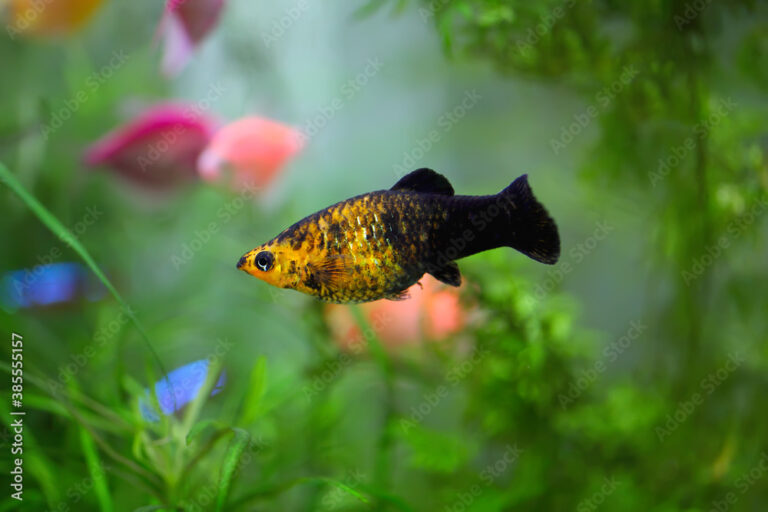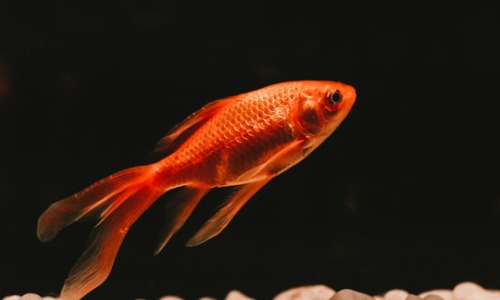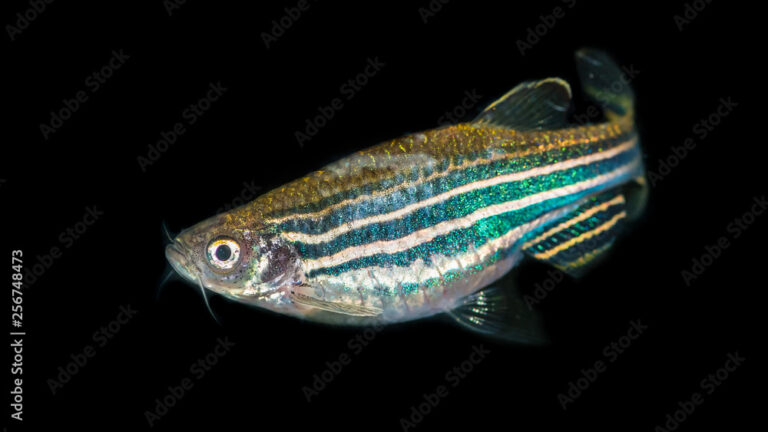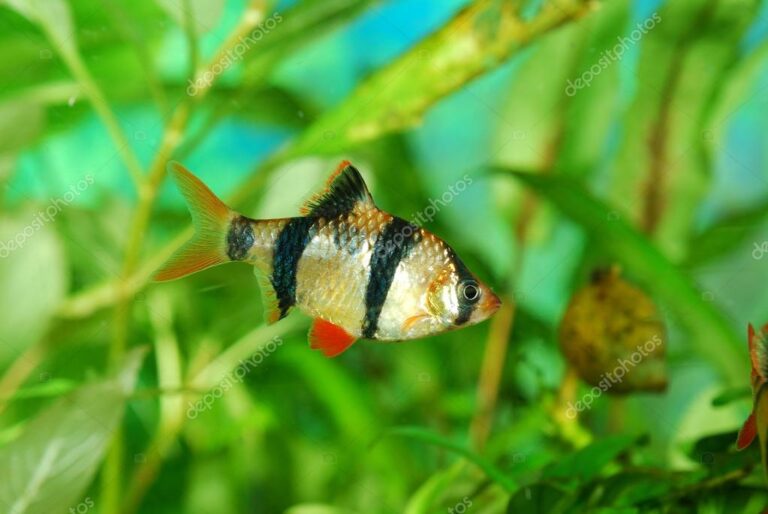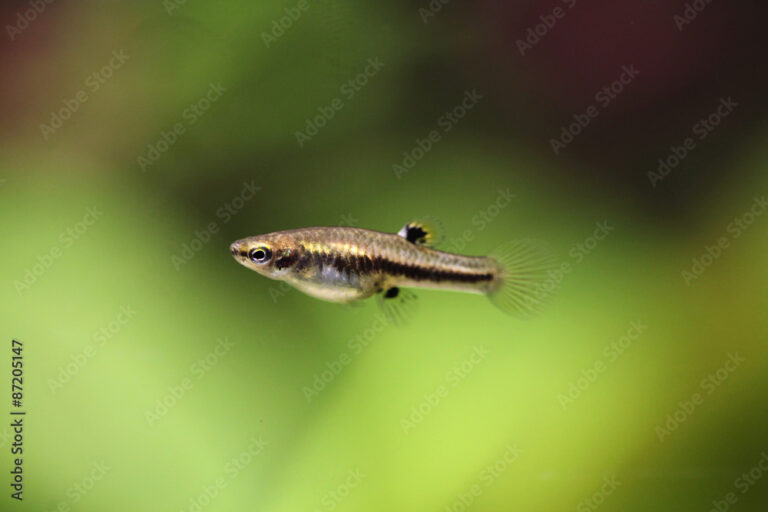The Ultimate Guide to Neon Tetras for Aquarium Hobbyists
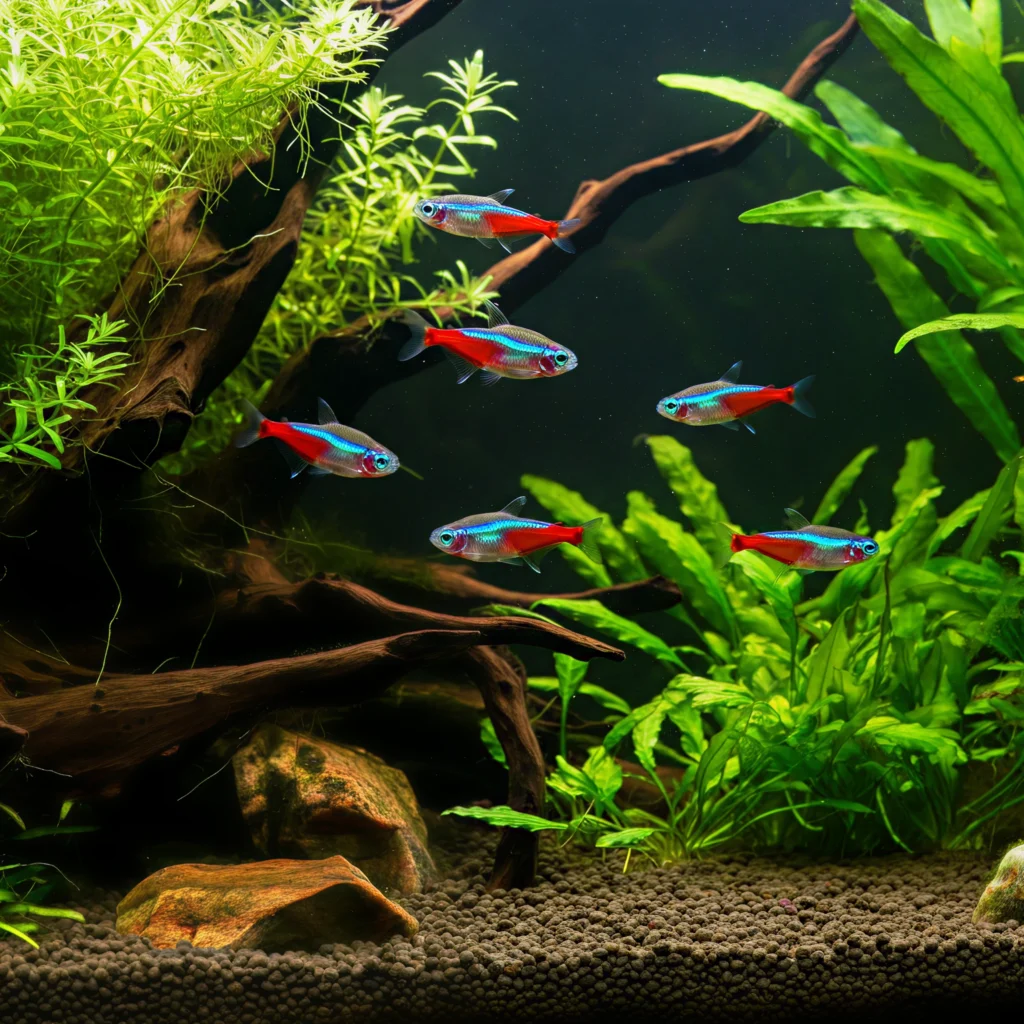
Neon Tetras are among the most popular freshwater fish for home aquariums, thanks to their vibrant colors and peaceful nature. These small, schooling fish are not only visually stunning but also relatively easy to care for, making them an ideal choice for both beginner and experienced aquarists. If you’re considering adding Neon Tetras to your tank or want to learn more about how to care for them, this guide covers everything you need to know—from their origins to breeding them successfully.
A Brief Introduction to Neon Tetras
Native to the clear streams of the Amazon Basin in South America, Neon Tetras (scientific name Paracheirodon innesi) are among the most recognized and loved aquarium fish worldwide. Their popularity can be attributed to their neon blue and red colors, low maintenance requirements, and compatibility with a wide range of tank setups. They are schooling fish, which means they thrive in groups, flitting fluidly through the water as a cohesive unit.
“Neon Tetras are a fantastic choice for beginner aquarists due to their hardiness and schooling behavior,” says Dr. Emily Carter, a marine biologist at the Chicago Aquarium.
The Stunning Appearance and Behavior of Neon Tetras
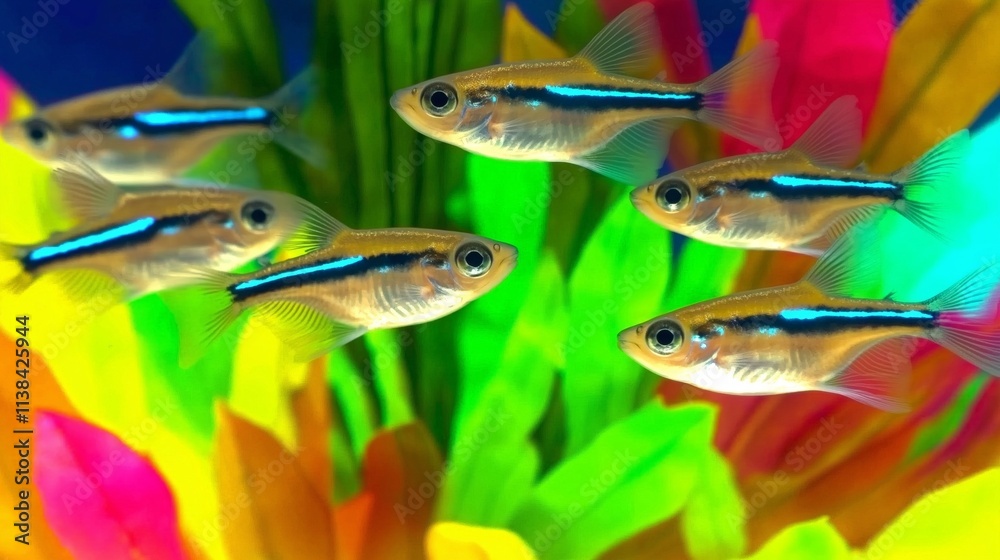
Physical Characteristics
At an average size of just 1.5 inches, Neon Tetras may be small, but their beauty is unmatched. Their iridescent blue stripe extends from their nose to their adipose fin, perfectly complemented by a bright red stripe running from the mid-body to the tail. This vibrant coloration is more vivid under specific lighting conditions, making them a focal point in a well-lit aquarium.
Behavior
Neon Tetras are peaceful and thrive when kept in groups of at least six, though larger schools are highly recommended. Their schooling behavior not only reduces stress but also creates a mesmerizing display as they move in unison. They are most active during the day and tend to stay in the middle levels of the tank.
Creating the Perfect Home for Neon Tetras
A well-planned tank setup is crucial for keeping Neon Tetras healthy and happy.
Tank Size and Setup
- Tank Size: While Neon Tetras are small, they need space to school and swim freely. A 10-gallon tank is the absolute minimum, but a 20-gallon tank is ideal for larger groups.
- Water Parameters:
- Temperature: 72°F to 78°F
- pH Level: 6.0 to 7.5
- Hardness: 1-2 dGH (soft water)
- Substrate: A dark substrate enhances the Tetras’ vibrant colors and mimics their natural environment.
- Lighting: Dim lighting reduces stress and highlights their iridescent hues. Use plants like Amazon sword, Java fern, or floating plants to diffuse light.
- Filtration and Aeration: Ensure proper filtration and gentle water flow, as Tetras prefer calm waters.
- Tankmates: Neon Tetras are peaceful and pair well with other non-aggressive species like Corydoras catfish, small rasboras, and shrimp.
“Maintaining stable water parameters is key to ensuring the longevity and health of your Neon Tetras,” advises veteran hobbyist John Doe.
Feeding Neon Tetras for Optimal Health

A well-balanced diet is essential for vibrant colors and long-term health.
- Staple Foods: High-quality flake or pellet food designed for small tropical fish.
- Treats:
- Live Food: Brine shrimp, daphnia, and bloodworms.
- Frozen Food: Similar options to live food but more practical for storage.
- Feeding Schedule: Feed small amounts 1–2 times daily. Only provide food that they can finish within two minutes to avoid overfeeding and water contamination.
Pro Tip: Rotate their diet to ensure they receive a variety of nutrients and occasionally include plant-based flakes to mimic their diet in the wild.
Identifying and Treating Common Neon Tetra Diseases
While generally hardy, Neon Tetras can be susceptible to disease if their environment isn’t well-maintained.
Common Diseases
- Neon Tetra Disease:
- Symptoms: Loss of color, difficulty swimming, cysts on the body.
- Treatment: Unfortunately, this disease is incurable. Prevent it by quarantining new fish.
- Ich (White Spot Disease):
- Treatment: Raise the aquarium temperature to 82°F and use ich-specific medication.
- Symptoms: Tiny white spots on the body and fins, scratching on surfaces.
- Fin Rot:
- Treatment: Administer antibacterial medication and improve water quality.
- Symptoms: Frayed or discolored fins.
“Observe your Neon Tetras regularly for signs of illness or stress,” recommends Dr. Emily Carter. Early detection is key to preventing the spread of diseases.
The Art of Breeding Neon Tetras
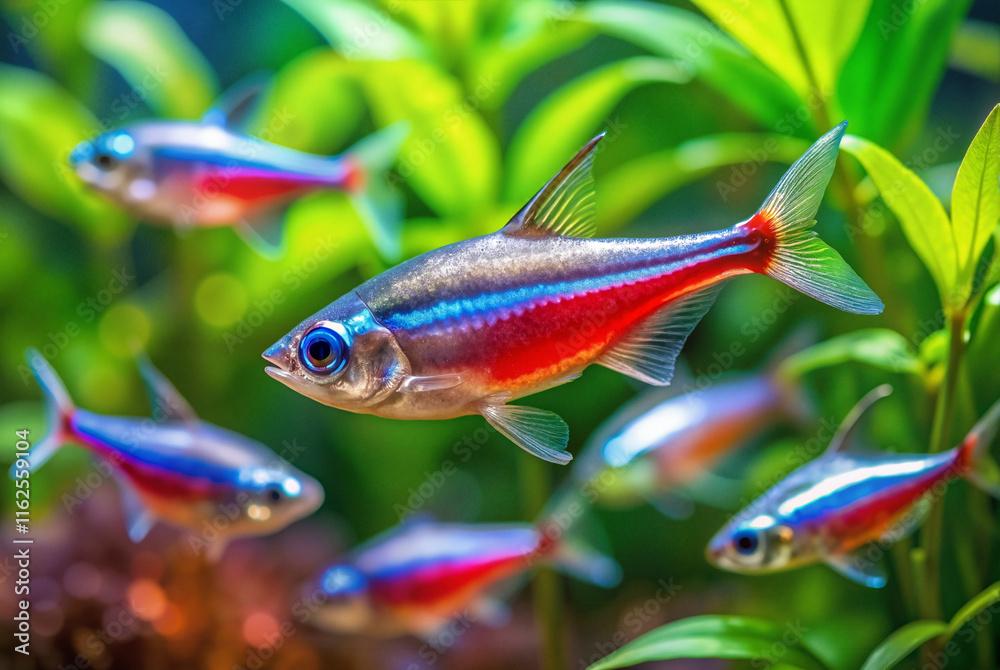
Breeding Neon Tetras in a home aquarium requires careful planning but is highly rewarding.
- Set Up a Breeding Tank:
- Use a 10-gallon tank with soft, slightly acidic water (pH 5.0–6.0) and a temperature of 75°F–80°F.
- Include fine-leafed plants or a breeding mop for egg-laying.
- Choose Healthy Pairs:
- Select vibrant, mature fish for breeding. Males are slimmer, while females have a rounder belly.
- Trigger Spawning:
- Gradually lower the tank temperature by a few degrees for a couple of days, then warm it back up to mimic natural rain-induced spawning conditions.
- Egg Care:
- Once eggs are laid, remove the adults to prevent them from eating the eggs.
- Raise the Fry:
- Eggs hatch within 24 hours. Feed the fry infusoria or liquid fry food until they’re large enough for micro-pellets.
“Breeding Neon Tetras can be challenging, but the reward of seeing new life makes it worthwhile,” shares experienced breeder Alice Smith.
Final Thoughts on Keeping Neon Tetras
Neon Tetras are a wonderful addition to any freshwater aquarium, owing to their vibrant beauty, peaceful temperament, and ability to create mesmerizing schools. By following this guide—providing a suitable tank setup, maintaining stable water parameters, and offering a balanced diet—you can ensure your Neon Tetras thrive in your care.
Whether you’re a beginner or a seasoned hobbyist, Neon Tetras will undoubtedly bring joy and life to your aquarium. Remember, consistency and observation are the keys to their well-being. Start your underwater adventure today with a school of these radiant fish!


